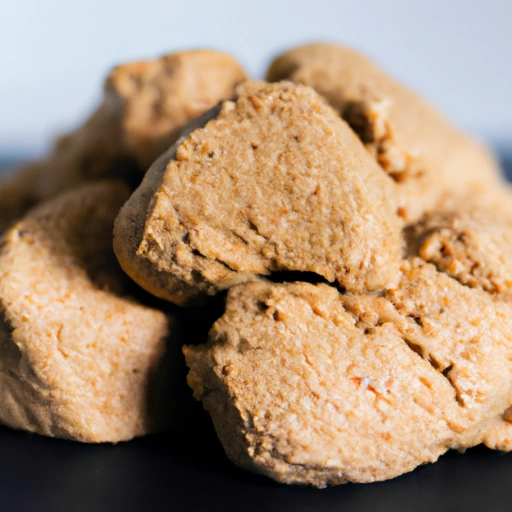Seitan
Description

Seitan, often dubbed as 'wheat meat,' is a popular vegan and vegetarian substitute for meat, made from gluten, the main protein found in wheat. It has a remarkably meat-like texture when cooked, which makes it a favorite among those looking to reduce their meat consumption without sacrificing the satisfaction of a 'meaty' bite.
Common uses
Seitan is commonly used as a meat substitute in a variety of dishes, including stir-fries, sandwiches, salads, and as a protein addition to vegan and vegetarian entrees.
Nutritional value
Calories
Seitan contains approximately 120 calories per 100 grams (3.5 ounces).
Protein
Seitan is rich in protein, offering about 25 grams per 100 grams (3.5 ounces).
Fat
It is low in fat, with roughly 1.9 grams per 100 grams (3.5 ounces).
Carbohydrates
Consisting mainly of gluten, it contains about 3.9 grams of carbohydrates per 100 grams (3.5 ounces).
Vitamins
While not a significant source of vitamins, some B vitamins may be present, especially if fortified.
Minerals
Seitan provides minerals such as selenium, iron, and calcium, though the amounts can vary based on the preparation method.
Health benefits
Seitan's high protein content makes it beneficial for muscle repair and growth. Its low-fat profile can also contribute to heart health when it replaces higher-fat meat options.
Potential risks
Individuals with celiac disease or gluten sensitivity should avoid seitan due to its high gluten content. Overconsumption might also lead to digestive discomfort for those sensitive to wheat products.
Common recipes
Seitan is featured in recipes such as vegan 'beef' stews, 'chicken' nuggets, and barbecued 'ribs.'
Cooking methods
It can be baked, grilled, fried, steamed, or sautéed, making it incredibly versatile in the kitchen.
Pairing with other ingredients
Seitan pairs well with robust sauces and spices, and can be incorporated into dishes that traditionally feature chicken, beef, or pork.
Summary
Seitan is a versatile, protein-packed ingredient enjoyed around the world as a meat alternative. Its adaptability in cooking and neutral flavor profile allows it to take on a range of tastes and textures, making it a favorite in plant-based cuisine.